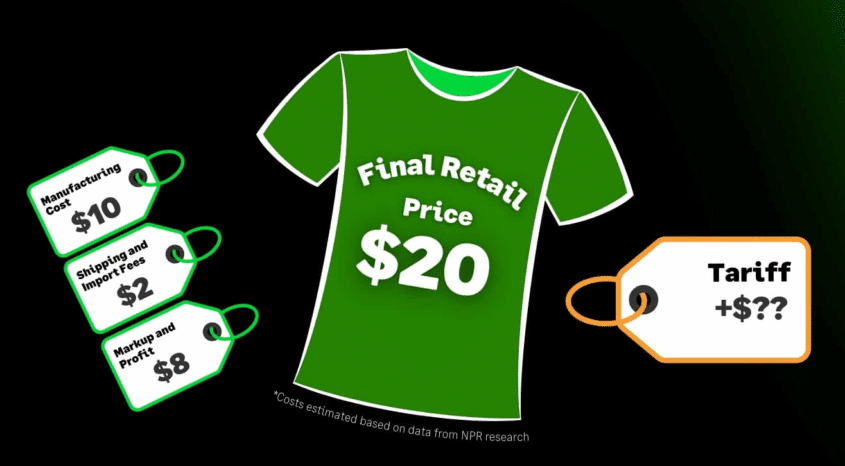It’s easy to get enticed by the latest news on how artificial intelligence will revolutionize retail or how consumers are clamoring for AR-based mcommerce apps. While it’s smart to follow and track “the future of retail discussions”, it’s just as important to live in the now. SMEs need to ensure their business is running smoothly and profitably before spending capital and resources on touchscreen mirrors in changing rooms.
The key “now” strategy is implementing automation technology – no longer reserved for the retail giants like Amazon – to streamline SME’s unique back office operations.
The result is an improvement in customer satisfaction and a reduction in operation costs by performing back office tasks faster, more efficiently, and with less staff.
How Automation Works
Within their retail management system, merchants can create rules that define specific workflow actions and conditions to process automatically, as opposed to manually performing each function.
A rule is created in three easy steps:
- Assign the rule’s name, so it can be identified and managed amongst all other rules.
- Create a list of conditions and criteria for this rule. When an order comes into the system where all the criteria are met, the automation process takes it from there.
- Assign the automated actions that are to be performed when the rule’s conditions are met.
Merchants can create an endless array of rules for specific criteria, automating and performing multiple workflows and paths efficiently in the background.
Let’s look at three areas of operations and day-to-day back office processes that truly benefit from automation technology.
Automating Your Pick, Pack, Ship Process
Let’s say there is a SME retailer; we’ll call them Outer Heaven, a sporting goods company that stocks over 1000 SKUs at three warehouses located across the country. With an average of two SKUs per order, Outer Heaven’s team fulfills around 400 shipments per day.
Under manual operation conditions, when an order came into the system, it took several staff to perform the back office processes of pick, pack, and ship.
Management also discovered that staff were not consistently assigning order fulfillment to the closest warehouse to the customer, costing the company unnecessary shipping costs and longer delivery times. Some manually generated order confirmations slipped through the cracks, which resulted in increased order status requests from customers and added stress on the company’s support staff.
By setting up specific automation rules designed to support Outer Heaven’s unique operation:
- Orders were automatically routed to the appropriate warehouse based on location, with goods out notes generated for each specific warehouse. This lowered shipping costs and got orders to the customer faster.
- Once the order had been picked and packed, multichannel support enabled automatic update of inventory levels at the appropriate warehouse in real time.
- All along the way, the order status was made available for viewing online, both by management and by the customer. Once the package was on its way, an order status email was triggered and sent to the customer, along with tracking information. Happy customers equaled happy management and staff.
- While not a huge portion of their business, Outer Heaven sells internationally, so an exception rule was setup to manually review international orders to prevent fraud.
Doing More with Less Staff
Soon after setting up the automation rules, Outer Heaven introduced a new product line, adding another 40 SKUs to their offerings. Because of the savings in operation costs, they had the budget to allocate towards several social media marketing campaigns, which really boosted sales for their new products and exposure for their brand.
Even with the increase in orders and sales, they were able to continue to meet demand and provide superior customer support with less staff from before. This automated efficiency enabled two members of the order processing and packing department to be promoted to sales, furthering their competitive edge and market reach. And the new sales staff enjoyed moving up in the company and perks in their paychecks.
Successful Flash Sales
The topic of flash selling has been a contentious one over the years, with some outlets achieving great success while others experienced significant drops in profit margins and strains on their business.
This is why strategic consideration and thorough planning is required of merchants before they flip the flash-selling switch.
For Outer Heaven, their motivation for running a flash sale was to entice and attract new customers. Once they had the products picked and determined their promotion channel and awareness campaign, the flash sale got the green light and they were ready. So was their back office operation because of automation.
The average 400 sales per day jumped to 1000 in just eight hours. Orders still sailed through the system with ease, assigned to the appropriate warehouses and shipped out the same day. New customers received order confirmations that their new goodies were on the way. Inventory was updated in real time, and purchase orders were generated to restock the quickly sold goods.
They had 600 new customers that had the potential to become Outer Heaven fans after experiencing excellent service, quick receipt of their orders, and a new awareness of Outer Heaven products. The icing on the cake was the few hundred orders that came through with additional products at full price, driving up the merchant’s upselling metrics and potential for increasing CLTV.
No additional staff was needed to more than double their shipments in a few short hours. But their marketing team now had a proven power tool they could use to grow their business and expand their reach, while controlling costs and staying profitable.
When it comes to what customers truly want – their desired product in stock, same or next day delivery, a smooth buying process, and knowing when their order is expected to arrive – automation technology enables SMEs to deliver it all. It streamlines their back office while reducing operation costs and increasing their bottom line, freeing up money, time, and resources. Then, they’ll be able to invest in new technologies that will keep their retail businesses relevant and competitive far into the future.
We’d love to discuss further with you about how automation technology can enhance your retail business, so why not get in touch and speak to a specialist today?
This post first appeared on Retail Technology.




